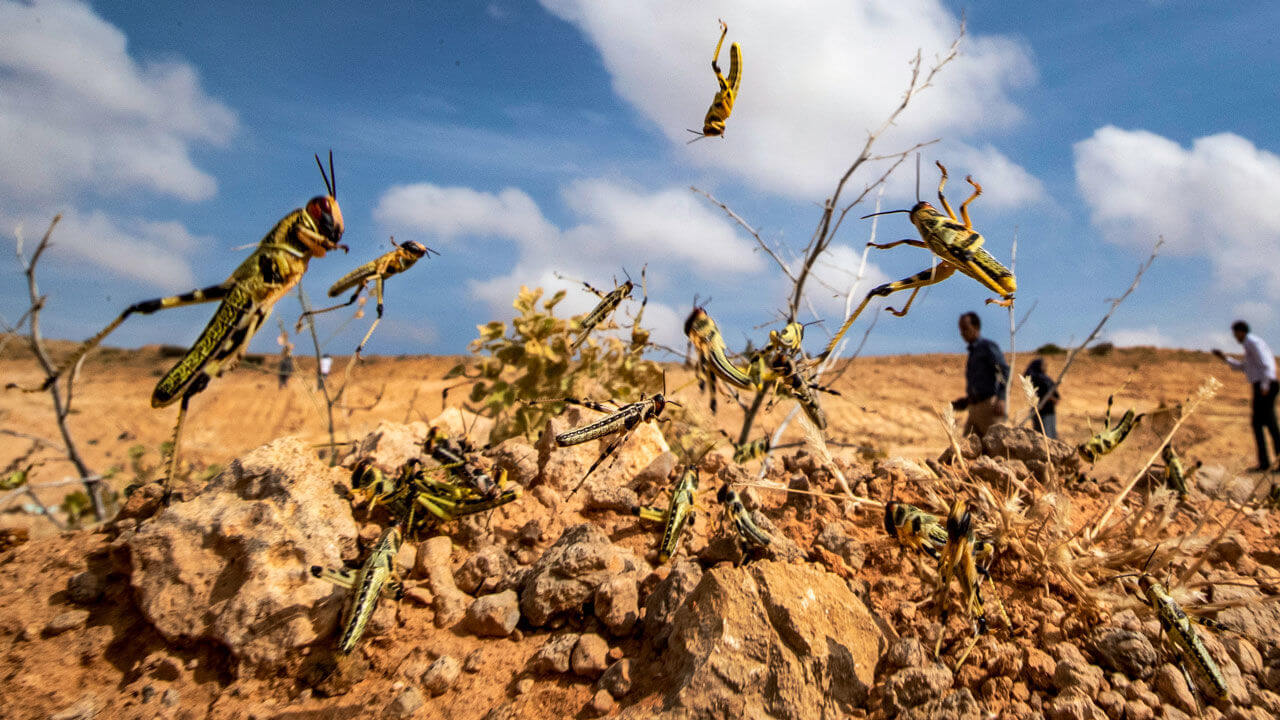
FAO steps up response to Zambia’s locust invasion
The next phase in the massive control operation against African Migratory Locust (AML) in Zambia is expected to begin today. The Food and Agriculture Organization of the United Nations (FAO) is working closely with the Government of Zambia and other partners to protect crops, pastures and livelihoods from the pest, under the US$500 000 Southern Africa Emergency Locust Response and Preparedness Project. This contributes to the USD 3,877,000 Southern Africa Locust Emergency Response Plan developed under coordination of the Southern Africa Development Community (SADC) in collaboration with the International Red Locust Control Organization for Central and Southern Africa (IRLCO-CSA).
In Zambia, locusts have been reported in Central, Southern and Western regions, particularly in Shibuyunji, Mumbwa, Itezhi-tezhi, Kazungula, Namwala, Sesheke, Nalolo, Mongu, Mwandi and Kalabo districts. The invasion has become very serious in Sesheke and Mwandi in Western Province.
In Zambia, locusts have been reported in Central, Southern and Western regions
A crisis task force meeting was convened by the Ministry of Agriculture and chaired by the Permanent Secretary with representatives from the Disaster Management and Mitigation Unit (DMMU), IRLCO-CSA and FAO. The meeting outlined action points for massive control of the swarms with back-up support from FAO starting Thursday this week.
Working with the Ministry of Agriculture, FAO will provide technical and financial assistance towards supporting ground surveys using GPS mapping systems, the formation of rapid response ground teams for monitoring and spraying, as well as facilitate production of awareness communication materials for communities.
The AML is transboundary and currently affects at least three other countries that are neighbours to Zambia: Namibia, Botswana and Zimbabwe. For this reason, FAO has launched a regional Emergency Technical Cooperation Programme (TCP) to support affected countries to respond to the AML threat. The project focuses on surveillance emergency response in the locust hotspots and strengthening coordination and information exchange among the affected countries. It also strengthens the capacity of IRLCOCSA to support the government in aerial surveillance and mapping activities in hard-to-reach areas, and provides technical support for national locust surveillance and control units to be established.
At the national level, fast action tracking meetings regarding the combat against the pest will continue be held on a weekly basis.

